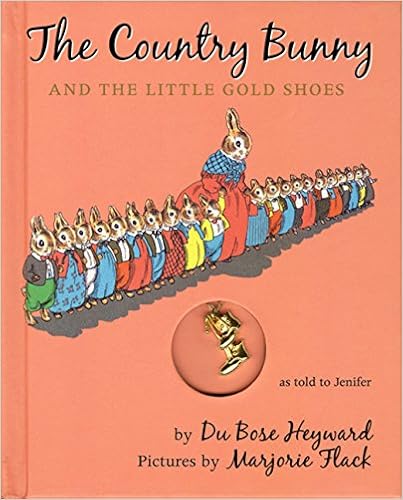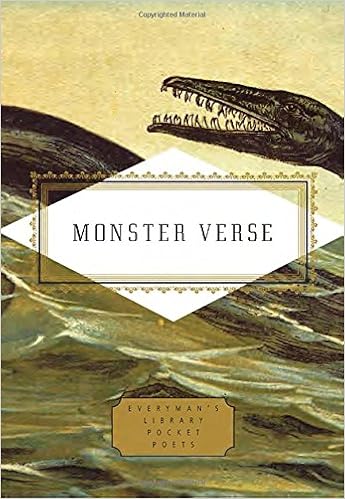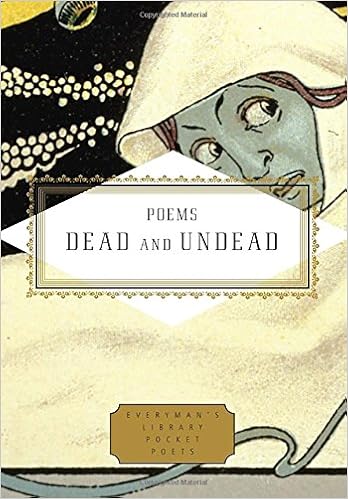Bean-Bag Thought Clouds
Wednesday, July 13, 2016
Summertime, and the reading is easy
Impossibly, our Harvey Summer Program enters its fourth week. BREAD conducts twice-weekly geography classes for the 3/4, 5/6 and junior high classrooms, and then opens the Reading Room for take-home selections. The Room also is in heavy use by teachers for kindergarten through 2nd grader read-alouds. (Multiple classes x multiple sessions) x several books per session = a BREAD scramble to place great NEW picture book titles on the shelves.
We've been so impressed by children's attention and curiosity. India, China, Africa, South America and Russia/former USSR already are under their belts. Despite a lack of prior knowledge, they have been utterly game to discover the wheres, whys and whithers of the planet's physical and political structures. Tectonic plates, latitude/longitude, cradles of civilization, the Terra Cotta Army, Genghis Khan, the Age of Discovery, India's partition, Russia's turbulent post-dissolution strategies: all have generated great questions.
Maps are now strewn across all the classroom bulletin boards. Other visual aids have ranged from mind-blowing books of photography (Earth from Above, The Hyena and Other Men) to Shiva statuettes.We have distributed pocket atlases to the older classes, so that students can match places to future reading. The Reading Room currently displays books related to each class.
So hooray for the 5th/6th's unabashed rendition of the chronological Chinese dynasties song. Huzzah to 3rd/4th, who insisted upon a (sticky) date taste-test after seeing a picture of Egyptian palms. Kudos to the junior high, who viscerally appreciated the disastrous relationship between Indian sanitation and NDM-1 antibiotic-resistant bacteria.
One final cheer for those out-of-state kids, who attend the Summer Program while visiting their Harvey relatives. Several are uber-readers, who would prefer never to leave the Reading Room. These visitors are assigned a special weekly BREAD book limit: how many can you carry?
So hum Frère Jacques, and sing along:
Shang, Zhou, Qin, Han
Shang, Zhou, Qin, Han
Sui, Tang, Song
Sui, Tang, Song
Yuan, Ming, Qing, Republic
Yuan, Ming, Qing, Republic
Mao Zedong
Mao Zedong
Wednesday, June 1, 2016
Childhood Reading
In a wonderful series in The New Yorker (6/6/16), authors meditate upon what, and why, they read as children.
- Poet Kevin Young moved to a less challenging school in fifth grade. Rather than skip a grade, he was relegated to back-of-the-classroom independent reading, which "meant going through old issues of Reader's Digest." Yet no reading is wasted. "[L]ike the Sears catalogue, Reader's Digest did contain a whole world in its thin pages, often despite itself." "[I]n a weird way, the condensing of words, and worlds, in those digests proved instructive for a poet. So, too, all that independent reading; it was in school that I learned how to be an autodidact."
- Rivka Galchen compares her daughter's reading experience with her own, more limited childhood reading choices. Galchen experiences her daughter's books as "mock-epic, [but] she sees language poetry. She doesn’t read for what happens next, I think, even as she has taken on her preschool teacher’s lilting 'What’s going to happen?' before turning a page. What happens next is often just another random animal at the zoo. Some of the books have plots, but she reads them more like eternal landscapes. In that sense, nothing is happening, and she reads for that nothing, I think."
- Galchen herself was raised with few books, and so read Celestial Seasoning tea boxes, cookie tins, Ed McMahon mailings. "It’s mostly a clatter of carbohydrates and junk mail, but all those words were so haunted—remain so haunted—by a sense of well-being, meaning, and light. My heart still lifts when I see language that recalls the covers of my mother’s textbooks: Basic basic, Fortran."
- Tessa Hadley compares her reading of The Secret Garden, as child and then adult. "My doubting, critical self seems smaller, moving around inside the novel's spaces, than the believing child who was here first." Although the novel now seems didactic and sentimental, "I'm not sorry that I grew up on this rich fruitcake diet of feeling and moralizing. There are worse things. This is one the miracles that fiction works: you can be a doubter and a believer in the same moment, in the same sentence."
- Hisham Matar proves that even a read-aloud fragment can permanently alter a child's mind. "It is strange to me, now that I am in my mid-forties, after a lifetime of passionate affairs with books -- some, I later realized, undeserving of my youthful fervor, a few that I encountered at the wrong moment, and plenty of others that still light up rooms inside me -- in two tremendous languages, Arabic and English, that the book that has affected me most is one I came across when I was ten or eleven years old and about which I know almost nothing. I haven't read it. And, notwithstanding the many attempts I have made to find it, I have failed to learn so much as its title or the name of its author."
Celebratory Final Lunch of the Saturday Morning Geography Club
Our core group of fourth and fifth-grade girls were rewarded with a loyalty lunch at Tandoor Cuisine of India, a real find in Schererville, Indiana. Although none previously had tasted an Indian dish, they were game to try everything: naan, chaat pappri (with the tamarind and mint dipping sauces), vegetable biryani, tandoor chicken, curry chicken, aloo gobhi, dal makhani. No grimaces, no fuss. They were intent and sedulously polite diners, who tickled the restaurant staff.
We were so impressed by their approach to a new cuisine, and a novel experience. Most never eat in any kind of restaurant. One girl noted that she was clumsy with a knife and fork, as virtually all her (tortilla-based) meals require no implements.
The one disappointment: coffee. All had insisted on a cup with the meal, a habit restricted to Lake Wobegon retirees. Blame rested upon their recent Wisconsin camp experience, where dining hall "coffee" was constructed with one tablespoon java to 16 hazelnut creamers. Coffee in its raw state was a bitter shock. One fourth-grader did finish her cup, and one shudders to extrapolate to her college caffeine-tolerance.
We were so impressed by their approach to a new cuisine, and a novel experience. Most never eat in any kind of restaurant. One girl noted that she was clumsy with a knife and fork, as virtually all her (tortilla-based) meals require no implements.
The one disappointment: coffee. All had insisted on a cup with the meal, a habit restricted to Lake Wobegon retirees. Blame rested upon their recent Wisconsin camp experience, where dining hall "coffee" was constructed with one tablespoon java to 16 hazelnut creamers. Coffee in its raw state was a bitter shock. One fourth-grader did finish her cup, and one shudders to extrapolate to her college caffeine-tolerance.
Wednesday, April 6, 2016
Friday, April 1, 2016
Working Mothers Circa 1939
A Reading Room champion, and after-school volunteer extraordinaire, shared this mother-power winner with us. In 1939, author DuBose Heyward understood the fallacies of societal stereotypes and strictures. How wonderful that his book remains in print, as we seem to need regular reminders.
Humble Mother Cottontail, burdened with 21 children, obviously could never qualify as one of the five Easter Bunnies. Such was the sneer of the male white bunnies and the Jack Rabbits. " 'Only a country rabbit would go and have all those babies. Now take care of them and leave Easter eggs to great big men bunnies like us.' " Surely her responsibilities had sapped her swiftness. And what would befall her children during her absence at work?
The Country Bunny, however, proves that she has not lost a step. She further solves childcare through the genius of delegation: half-grown bunnies can clean and cook, after all, with proper training. During a mission-impossible egg delivery to a mountain-isolated sick child, Country Bunny displays courage and grit. Grandfather Bunny rewards her merit with a pair of gold shoes, imbued with magical leaping powers.
DuBose Heyward also wrote the novel Porgy, and co-wrote the libretto for the inspired George Gershwin opera, Porgy and Bess. If only Gershwin had spun tunes from The Country Bunny.
Humble Mother Cottontail, burdened with 21 children, obviously could never qualify as one of the five Easter Bunnies. Such was the sneer of the male white bunnies and the Jack Rabbits. " 'Only a country rabbit would go and have all those babies. Now take care of them and leave Easter eggs to great big men bunnies like us.' " Surely her responsibilities had sapped her swiftness. And what would befall her children during her absence at work?
The Country Bunny, however, proves that she has not lost a step. She further solves childcare through the genius of delegation: half-grown bunnies can clean and cook, after all, with proper training. During a mission-impossible egg delivery to a mountain-isolated sick child, Country Bunny displays courage and grit. Grandfather Bunny rewards her merit with a pair of gold shoes, imbued with magical leaping powers.
DuBose Heyward also wrote the novel Porgy, and co-wrote the libretto for the inspired George Gershwin opera, Porgy and Bess. If only Gershwin had spun tunes from The Country Bunny.
Thursday, March 24, 2016
That's Beest With Two E's
A small BREAD group today braved rain, wind and Metra platforms, in order to visit the amazing Strandbeest exhibition at the Chicago Cultural Center. Artist Theo Jansen's unique vision - beach-trudging creatures of pvc pipe and zipties - had them clamoring to meet him. Alas Jansen had returned to the Netherlands after the exhibition's initial set-up. What a disappointed fan base!
They were held rapt by the movement demonstration.
They pumped their hearts out, to understand how air powers the creatures.
They were fascinated by the myriad of underlying parts, and the beauty of those pieces.
At their Corner Bakery lunch, they instantly selected the best spot for people-watching. In every kind of weather, that corner of the Santa Fe Building bustles.
Filled with the spirit of making, the kids then wandered through the Santa Fe lobby to discover the Chicago Architecture Foundation's Lego Studio.
Bottomless tubs of Legos, to build without charge or interference? Score! Our kids intently rummaged through every bin, and then wheedled specialty pieces from the staff. Their creations were then promptly added to the Studio's open display of work.
One last swing through the CAF's shop for small gifts, and then home. "I never rode on a train before," mused Nicholas, "but now I have."
They were held rapt by the movement demonstration.
They pumped their hearts out, to understand how air powers the creatures.
They were fascinated by the myriad of underlying parts, and the beauty of those pieces.
At their Corner Bakery lunch, they instantly selected the best spot for people-watching. In every kind of weather, that corner of the Santa Fe Building bustles.
Filled with the spirit of making, the kids then wandered through the Santa Fe lobby to discover the Chicago Architecture Foundation's Lego Studio.
Bottomless tubs of Legos, to build without charge or interference? Score! Our kids intently rummaged through every bin, and then wheedled specialty pieces from the staff. Their creations were then promptly added to the Studio's open display of work.
One last swing through the CAF's shop for small gifts, and then home. "I never rode on a train before," mused Nicholas, "but now I have."
Sunday, March 20, 2016
Everyman's Library Pocket Poets
We love this series, whose alluring design and pocket size lure readers otherwise intimidated by anthologies. A thick, full-size collection can easily be rejected, as much-of-a-muchness. The absence of a theme can render jarring the transition from piece to piece. Crowded text design tempts kids to turn pages as they would fiction, resulting in a muddy experience. Consider the sad brown of repeatedly dyed Easter eggs, or a classic youth group dinner: one common pot of 25 different canned soups.
We will feature title-give-aways, with a poem read-aloud quid pro quo. Readers will learn to decode the poet's intent; even the less brave will gain by listening. With Everyman titles which gather poems on cats, dogs, zombies, ghouls and monsters, we hope to excite some clamor.
We will feature title-give-aways, with a poem read-aloud quid pro quo. Readers will learn to decode the poet's intent; even the less brave will gain by listening. With Everyman titles which gather poems on cats, dogs, zombies, ghouls and monsters, we hope to excite some clamor.
Subscribe to:
Posts (Atom)














